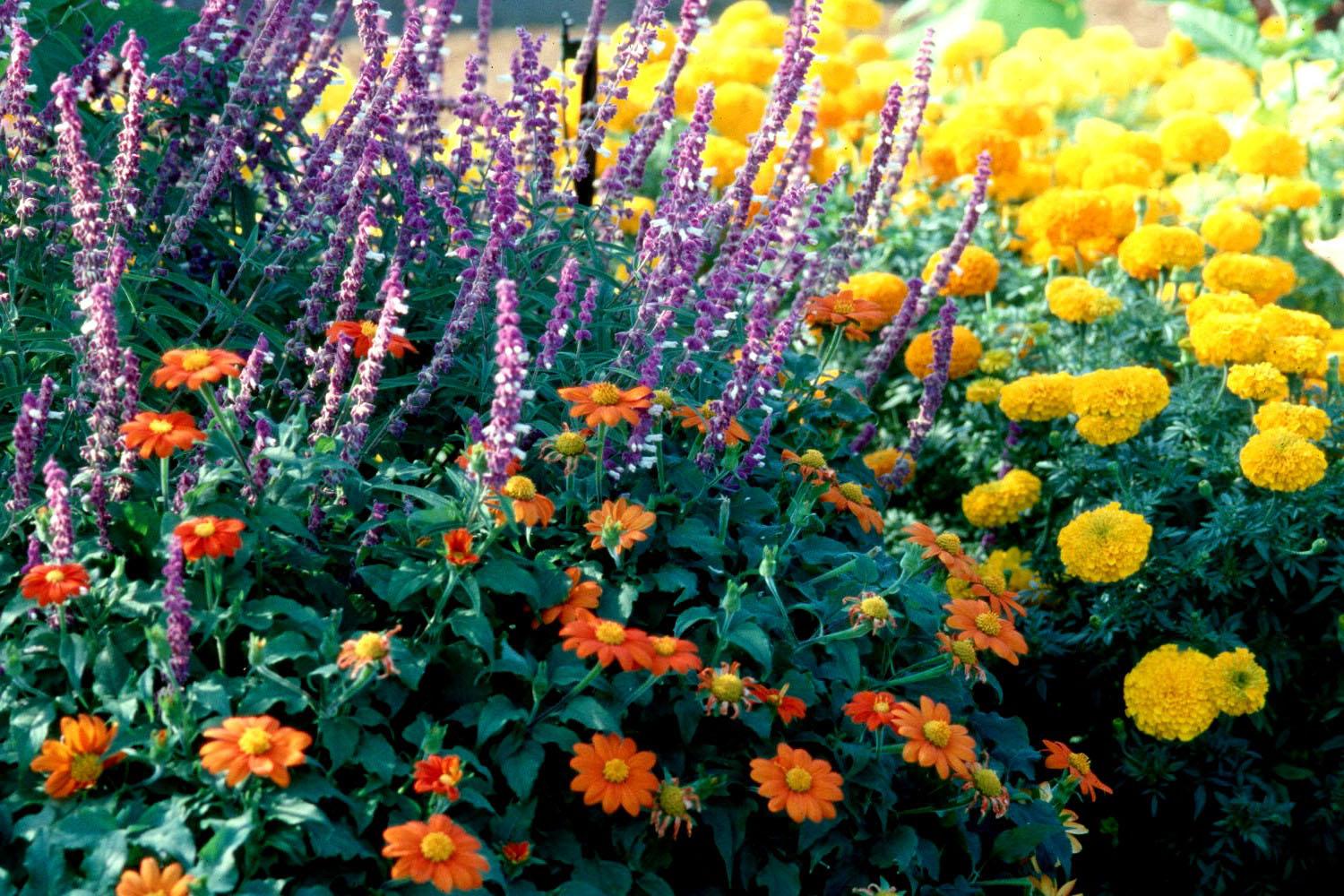Information Possibly Outdated
The information presented on this page was originally released on September 26, 2003. It may not be outdated, but please search our site for more current information. If you plan to quote or reference this information in a publication, please check with the Extension specialist or author before proceeding.
Mexican bush sage offers fiesta colors
By Norman Winter
MSU Horticulturist
Central Mississippi Research & Extension Center
The shorter days of the late summer or early fall can bring a Mexican fiesta to gardens around the state, and the showiest displays are those with the tall violet-to-purple spikes of the Mexican bush sage, Salvia leucantha.
The Mexican bush sage is a short day or long night bloomer, starting in late summer and blooming through several hard frosts. The purple, fuzzy, velvet spikes with white flowers are produced in huge quantities. The gardener growing this species could easily harvest a hundred flower stems for the vase. The gray-green foliage provides garden interest, even if the plants aren't blooming.
The ideal site is full sun though a little afternoon shade is tolerated. The soil should be very well drained, as this plant is native to Mexico. Plant on raised beds or amend heavy soils with the addition of compost or humus. Well-drained soil may encourage next year's return further north than expected.
While preparing the soil, incorporate 2 pounds of a slow-release, 12-6-6-fertilizer per 100 square feet of bed space. Space the plants 24 to 36 inches apart planting at the same depth they are growing in the container. Do not plant under street or floodlights as these bloom in response to the number of dark hours.
Give supplemental water during long dry periods. In the fall, after significant frost damage, prune to the ground level and add a layer of mulch for winter protection. Feed in the spring with a light application of fertilizer with the emergence of growth and every six to eight weeks through September. The Mexican bush sage can be lightly pruned once or twice in late April and early June to increase the number of blooming stems for fall. Harvest several stems and tie with sprigs of rosemary for hanging in the kitchen.
Unfortunately, the Mexican bush sage is mostly sold generically, but Midnight (dark purple) and Kab (dwarf lavender) are choice selections.
The Mexican bush sage is primarily a fall bloomer so plan on combining with other fall colors. The real "fiesta" will begin when grown with the Mexican sunflower, Tithonia rotundifolia. Though this Mexico native blooms all summer, it really struts its stuff in the fall.
This plant produces huge orange flowers with yellow centers and is a butterfly and hummingbird magnet. The old-fashioned Torch will usually tower above the Mexican bush sage, while the All American Selections Winner Fiesta del Sol looks super as a smaller 2 to 3 foot plant. It too is very heat and drought tolerant.
In addition to the Mexican sunflower, marigolds, lantanas, chrysanthemums, angel trumpets and other salvias make great companion plants.
You will find the Mexican bush sage easy to propagate by division with the emergence of spring growth or by cutting. In years past, you would only find them for sale in the spring, but since they weren't blooming many gardeners would pass them by.
Now progressive garden centers offer them in the fall as well in large pots and in bloom. So since you get two shots at this wonderful plant there is no excuse not to have them in your garden from now on. Get some this weekend.



